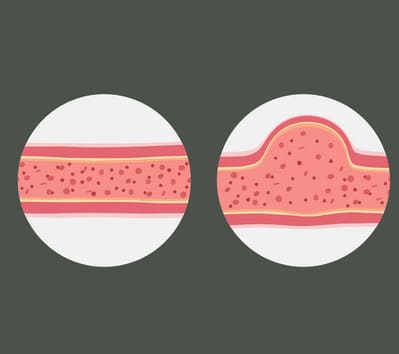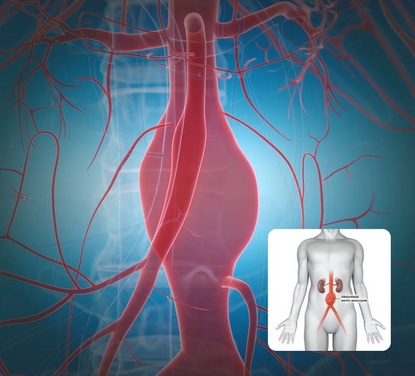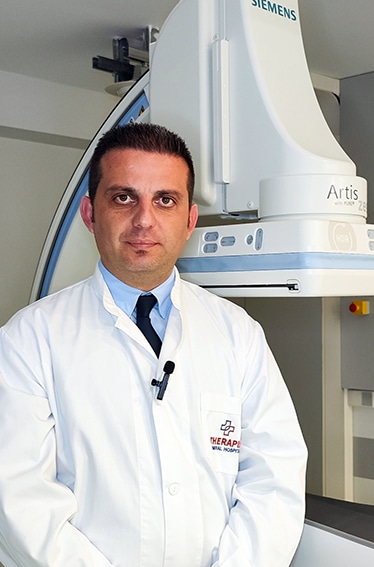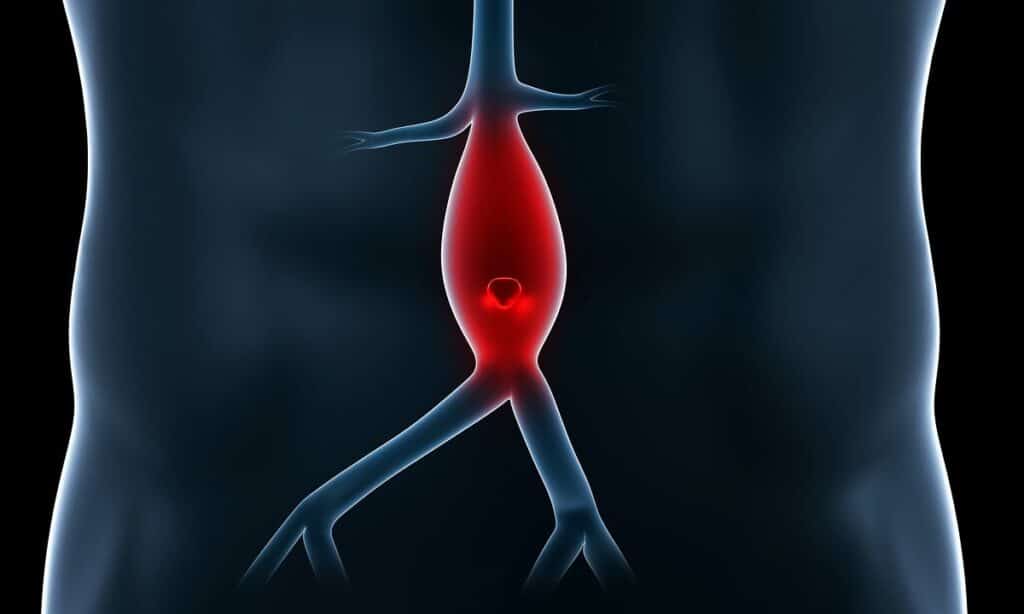Ο Dr. Panagiotis Theodoridis, MD, MSc, Head of the Vascular Surgery Department of Therapis General Hospital informs us.
What is an aneurysm?

Provided aneurysm in an artery we mean the stretching of the vessel over 1 ½ to 2 times its natural size.
Aneurysms can be found in any vessel of the body, with the most common aneurysms of the arteries.
Abdominal aortic aneurysm
The abdominal aorta is the second largest artery in the human body after the thoracic aorta and carries blood from the heart to the rest of the body.

Its normal diameter is 1,5 – 2 cm, it reaches the height of the 4th and 5th lumbar vertebrae and from that point it divides into the two iliac arteries that carry blood to the right and left leg. By the term abdominal aortic aneurysm we mean the expansion of the vessel over 3 – 3,5 cm and which is operated upon when the size reaches or exceeds 5 – 5,5 cm depending on the patient’s gender and the form of the aneurysm.
Some aneurysms due to their morphology are more dangerous for rupture and for this reason they are operated on in a smaller size.
Symptoms
Abdominal aortic aneurysm is usually asymptomatic and is discovered incidentally in diagnostic tests for other causes such as ultrasound and abdominal CT. Symptoms that may occur that may indicate the presence of an aneurysm are:
- Pain in the upper part of the abdomen with reflection in the left lateral ventricle
- Pulsating mass in the abdomen, when its size is large
- Gangrene of the fingers of the lower extremities when material from the inside breaks off and blocks an artery in the periphery
- Intense pain in the lumbar region with reflection in the abdomen in cases where the aneurysm is rapidly increasing in size. This situation is called a threatened rupture and needs immediate treatment.
Risk factors
In general, the etiology of abdominal aortic aneurysm remains unknown, but the following risk factors are implicated:
- Smoking
- Increased blood pressure
- Obesity
- Hyperlipidemia
Complications
The most important complication of abdominal aortic aneurysm is rupture. The percentage of patients who survive when an abdominal aneurysm ruptures ranges from 10% to 50%. Aneurysms larger than 7 cm have a 30% risk of rupture per year and are considered an emergency.
Treatment

The modern treatment of abdominal aneurysms is endovascular repair using stents. The stent these are designed in such a way that they fit the anatomy of the aorta and have a long duration without causing any kind of reaction from the body.


🟢 Dr. Panagiotis Theodoridis, MD, MSc, Head of the Vascular Surgery Department of Therapis General Hospital, is a Vascular Surgeon – Angiologist, and a Military Physician.
It deals with the diagnosis, monitoring & treatment of all vascular diseases:
▶️ Venous Insufficiency – Varicose Veins – Laser Treatment – Saphenectomy
▶️ Carotid Stenosis
▶️ Vascular Aneurysms
▶️ Diabetic foot – Opening of Blood Vessels
▶️ Renal Failure – Fistula – Catheter
➡️ You can make an appointment by calling 210 729111 or in any way that serves you through our contact page.

